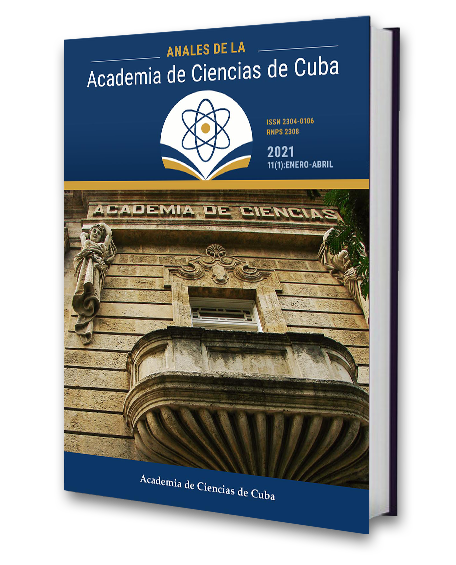Model inspired by a hydrological process for the forecast of spread scenarios of COVID-19
Keywords:
COVID-19, models, forecast, spread scenariosAbstract
Introduction: The mathematical models are abstractions of the reality that allow for the description of important characteristics of the phenomena studied. Among these, the epidemic models are considered one of the most powerful tools to analyze and understand epidemic propagation and control. Objective: A model for the forecast of spread scenarios of the COVID-19 has been developed.
Methods: A proposed population model inspired by analogy by hydrologic routing in rivers, an autoregressive integrated moving average model (ARIMA) and a transition model were combined in order to evaluate three possible spread scenarios and their temporary evolution during the development of COVID-19 pandemic.
Results: In this contribution, 27 countries having coronavirus daily reports until April 16th, 2020 were studied. They were grouped by quartiles according to rates of recovered and deceased people. This information permitted the establishment of criteria for the parameters involved in the proposed model for Cuba as a case study. The favorable, not very favorable and critical epidemic spread scenarios were generated from ARIMA up to April 29th, 2020 and the transition model extended to 120 days. The results of the model implementation were compared with the real data of the pandemic evolution in Cuba up to May 22nd, 2020, resulting in a satisfactory correspondence between the real daily reports and the scenarios of active cases. This model could be used in the same way for other American countries that also have a delay with regard to the countries selected for this study.
Downloads
Downloads
Published
How to Cite
Issue
Section
License
The journal Anales de la Academia de Ciencias de Cuba protects copyright, and operates with a Creative Commons License 4.0 (Creative Commons Attribution-NonCommercial License 4.0). By publishing in it, authors allow themselves to copy, reproduce, distribute, publicly communicate their work and generate derivative works, as long as the original author is cited and acknowledged. They do not allow, however, the use of the original work for commercial or lucrative purposes.
The authors authorize the publication of their writings, retaining the authorship rights, and assigning and transferring to the magazine all the rights protected by the intellectual property laws that govern in Cuba, which imply editing to disseminate the work.
Authors may establish additional agreements for the non-exclusive distribution of the version of the work published in the journal (for example, placing it in an institutional repository or publishing it in a book), with recognition of having been first published in this journal.
To learn more, see https://creativecommons.org






